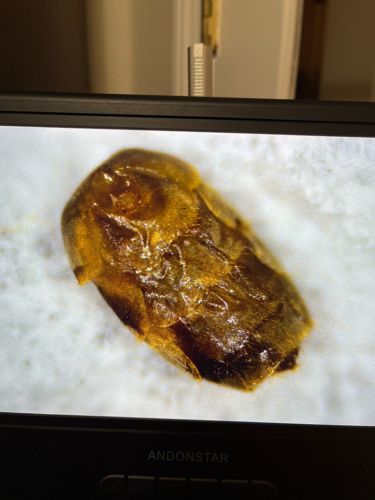Larder Beetle (larva or pupa)
Scientific Name: Dermestes lardarius
Order & Family: Coleoptera, Dermestidae
Size: Larvae can reach up to 10-17 mm; adults are typically 7-9 mm in length.

Natural Habitat
Typically found in areas with stored food products, taxidermy collections, or animal remains. Indoors, they infest pantries, attics, and basements. Outdoors, they can be found in bird nests, dead animals, or beehives.
Diet & Feeding
Scavengers, feeding on a wide range of animal products including dried meats, cheeses, pet food, leather, fur, feathers, and dead insects. They are also known to feed on plant-based materials with high protein content.
Behavior Patterns
The lifecycle involves egg, larva, pupa, and adult stages. Larvae are hairy and distinctive with two small spines on their posterior. They prefer dark, undisturbed areas. When ready to pupate, larvae often bore into hard materials like wood, books, or insulation, creating chambers for pupation. Adults are good fliers and are attracted to light.
Risks & Benefits
Potential risks include damage to stored food products, museum specimens, and natural fiber items. Heavy infestations can be a significant pest. They do not typically bite or sting humans, but their bristles can cause skin irritation in sensitive individuals. In nature, they play a beneficial role as decomposers, helping to break down animal carcasses.
Identified on: 9/16/2025